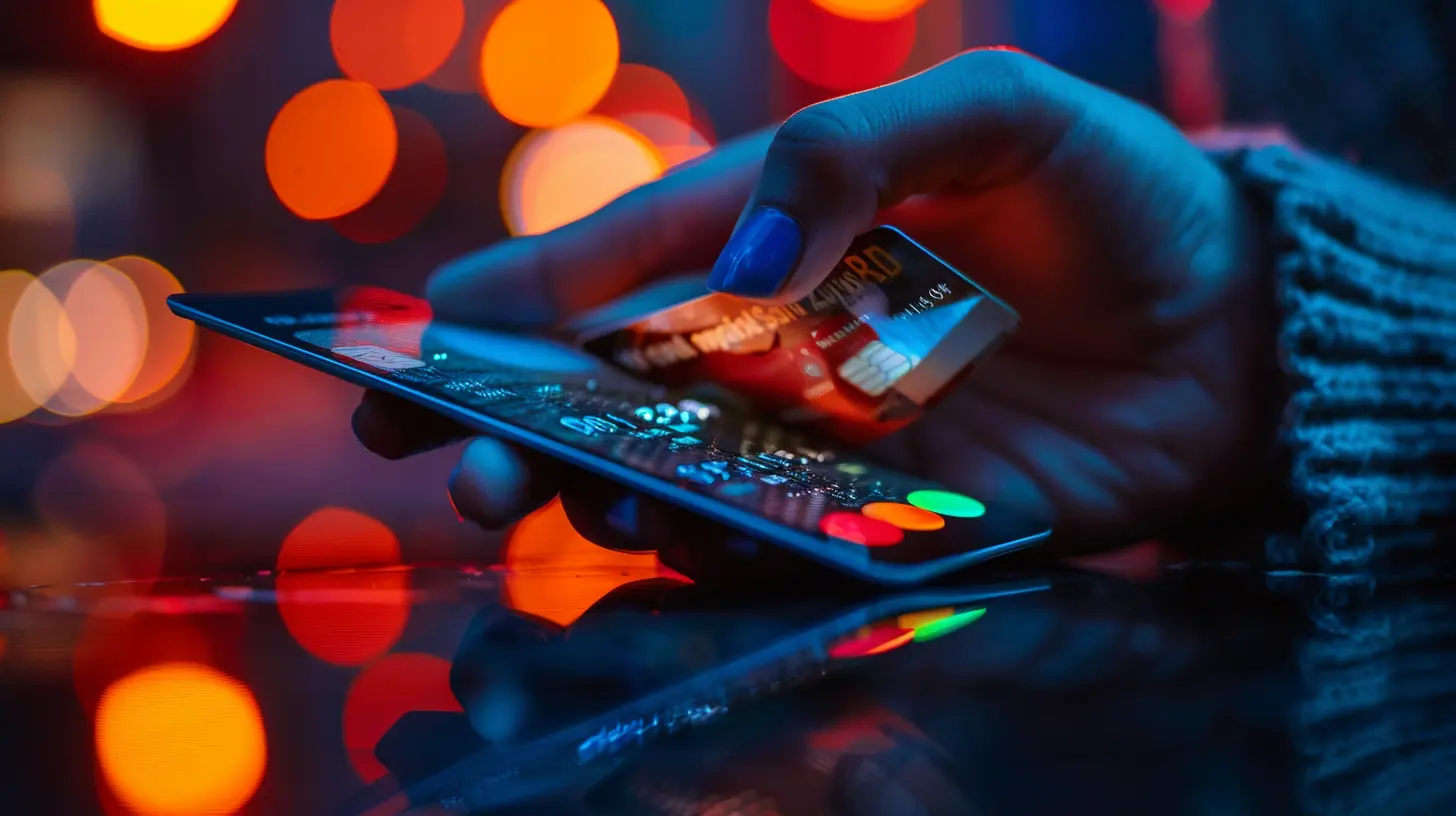10 March 2025
The world of banking isn't what it used to be. Long gone are the days of standing in long lines at the bank or meticulously balancing a checkbook by hand (do people even do that anymore?). Instead, the digital age has completely shaken up how we think about and interact with the financial system. Today, banking is all about convenience, speed, and accessibility. But if you're wondering how this whole shift affects you—and what you need to know to make the most of it—you’re in the right place.
Let’s dive headfirst into the fascinating world of digital banking and uncover how it’s revolutionizing our financial lives. 
What is Digital Banking, Anyway?
Before we go any further, let’s define what we’re talking about. Digital banking is essentially the use of online platforms—think websites, mobile apps, or even wearable tech—to manage your finances. In other words, it’s banking without bricks and mortar.And trust me, this isn’t just about checking your balance on your phone. Digital banking can encompass everything from opening a savings account, transferring money, paying bills, applying for loans, or even investing—all from the comfort of your couch.
Pretty cool, right? But as with anything in life, it’s not all sunshine and rainbows. Let’s explore the pros and cons. 
The Perks of Banking in a Digital World
1. Convenience at Your Fingertips
Nobody loves wasting time, and digital banking eliminates the need for things like visiting a branch during "bank hours." Need to transfer money to a friend at midnight? No sweat. Want to deposit a check without leaving your house? Snap a picture with your phone, and you’re good to go.It’s kind of like having a bank in your pocket—portable, reliable, and always ready to work when you are.
2. Lower Fees (Sometimes)
Let’s face it: traditional banking fees can feel like hidden booby traps. Maintenance fees, ATM charges, overdraft fees—the list goes on. Digital banks (like Chime or Ally, for example) often have lower overhead costs, so they can pass those savings on to you. Some even waive fees altogether.Still, always read the fine print. There’s no such thing as a free lunch, and some digital banks sneak in fees in unexpected ways.
3. 24/7 Customer Service
Imagine having a personal banker, but they never sleep. Many digital banks use AI-powered customer support tools or chatbots that let you get answers to your questions whenever you need them. No need to sit on hold for hours waiting for customer service.4. Financial Insights at a Glance
Many banking apps today are more than just transaction hubs. They also come loaded with tools to track spending, create budgets, analyze habits, and even give investment advice. Think of it as having a financial coach in your pocket.
The Challenges (Because Nothing’s Perfect)
1. Security Concerns
Let’s get real—moving everything online always comes with risks. Cybercriminals love targeting digital banking platforms because of the treasure trove of data they can steal. Phishing scams, data breaches, and hacked accounts are genuine threats.That’s why it’s crucial to practice good cyber hygiene. Use strong passwords (no, "123456" doesn’t count), enable two-factor authentication, and be wary of shady-looking emails or messages.
2. Tech Glitches Are Inevitable
Have you ever tried logging into an app only to see the spinning wheel of doom? Or worse, had your online banking system go offline just when you needed it most? Technology is great when it works, but it can also fail, leaving you stranded.3. Limited Personal Touch
Let’s be honest, sometimes you just want to talk to a real human who understands your unique situation. Digital banks may offer chatbots and virtual help, but they can’t always replace the warmth or nuance of face-to-face interactions.
How Digital Banking is Changing Traditional Banks
Here’s an interesting twist: while digital-first banks are flourishing, traditional banks are stepping up their game to stay relevant. Many are adopting hybrid approaches—offering both physical branches and robust digital options.Think of it as the best of both worlds. For example:
- Mobile Check Deposits: Even old-school banks now let you deposit checks without stepping inside.
- Online Loan Applications: Forget piles of paperwork. You can apply for loans through their apps or websites instead.
- Virtual Advisors: Many traditional banks now provide virtual consultations for financial planning, investments, and more.
By embracing these digital tools, traditional banks are trying to keep pace with their all-digital competitors.
Is Digital Banking the Right Choice for You?
If you’re someone who values convenience, speed, and lower fees, then digital banking might be your perfect match. But it really depends on your lifestyle and financial habits.For instance:
- Do You Travel Often? Digital banks with widespread ATM access or no foreign transaction fees might be lifesavers.
- Do You Prefer Talking to Humans? Then maybe stick with a traditional bank that offers a strong in-person experience.
- Are You Tech-Savvy? If apps, QR codes, and digital wallets make your eyes glaze over, you might find the whole process more stressful than it’s worth.
The great news is you don’t have to choose just one. Many people use a combination of both digital and traditional banking to suit their needs.
What’s Next? The Future of Digital Banking
It feels like we’re just scratching the surface of what’s possible in banking’s digital revolution. Here are some of the trends to keep an eye on:1. AI-Driven Personalization
AI algorithms are only getting smarter, meaning your banking app may soon know you better than you know yourself. Expect personalized financial recommendations tailored to your spending patterns, goals, and lifestyle.2. Blockchain and Cryptocurrency Integration
Don’t be surprised if your bank starts offering crypto wallets or crypto-backed loans. Blockchain technology could also revolutionize how banks process transactions, making them faster and more secure.3. Voice and Biometric Banking
Imagine asking Alexa to pay your bills or logging into your account with just a face scan. Voice and biometric recognition technologies are becoming more common in the financial sector.4. Financial Inclusion
Digital banking has the power to bring financial services to underserved populations, especially in remote areas where traditional banks don't operate. Who needs a physical bank branch when you’ve got a smartphone?How to Stay Safe in the Digital Banking World
As exciting as all of this sounds, it’s essential to prioritize your financial security. Here are a few quick tips to stay safe in the digital banking space:- Always use unique, strong passwords for your accounts.
- Enable two-factor authentication wherever possible.
- Be cautious of public Wi-Fi when accessing your accounts—use a VPN if necessary.
- Regularly monitor your accounts for suspicious activity.
- Keep your banking apps updated to ensure you’re using the latest security features.
Final Thoughts
Banking in the digital world is no longer a luxury—it’s the new normal. Whether you’re all about the convenience of mobile banking or still need the occasional face-to-face interaction, there’s no denying that technology has made managing money easier, faster, and more accessible.But change always comes with challenges. By staying informed and vigilant, you can enjoy all the perks of digital banking while minimizing the risks. So, here’s my parting question to you: Are you ready to embrace the future of banking, or will you hang onto those traditional methods a little while longer?









Poppy McPherson
This article astutely highlights the transformative impact of digital banking, but it should also address cybersecurity risks and the need for regulatory adaptations to protect consumers effectively.
April 1, 2025 at 6:40 PM